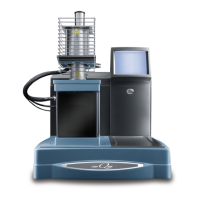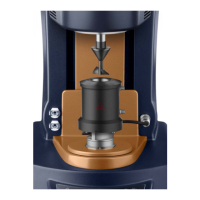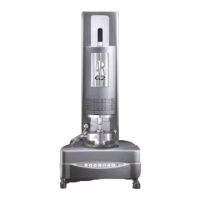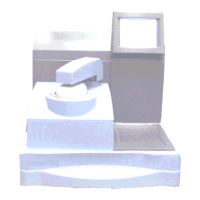TA I
NSTRUMENTS
TGA 2950 3–9
If your sample will melt during the
experiment, use a pan that is deep enough to
prevent spilling (the deepest pan is the 500
µL ceramic pan).
The platinum and ceramic pan types are reus-
able. To clean between experiments, use a
Bunsen burner or a propane torch, or run the pan
through a hot thermal program in the TGA to
burn out any residue. Aluminum pans are
disposable, do not attempt to clean and reuse
them.
Once you have selected the proper sample pan,
remove the tare tube, and using brass tweezers,
put the same type and size pan on the tare hook.
Use the first step in the weight calibration
procedure to mechanically tare the balance.
Taring the
Sample Pan
Taring the sample pan ensures that the weight
measured by the balance reflects the weight of
the sample only. You should tare the sample pan
before each experiment, even if you use the
same pan in consecutive experiments.
When you tare a pan, the TGA reads the weight
of the empty pan and then stores the weight as
an offset, which is subtracted from subsequent
weight measurements. For optimum accuracy,
the weight reading must be stable before it is
accepted as an offset. If you use the automatic
tare procedure, the TGA will determine when
the weight reading is sufficiently stable; or you
can determine the acceptability of the weight
reading by taring the system manually. Both tare
procedures are explained here.
Running a TGA Experiment

